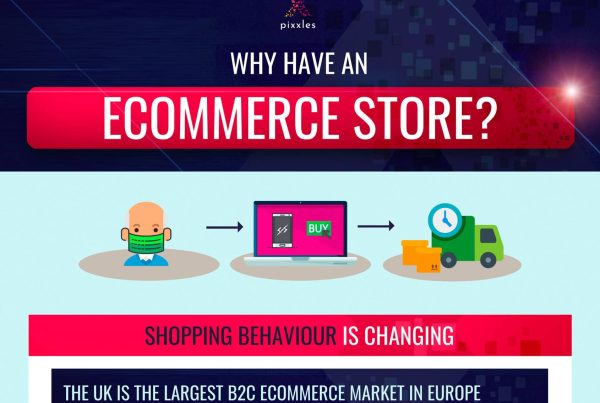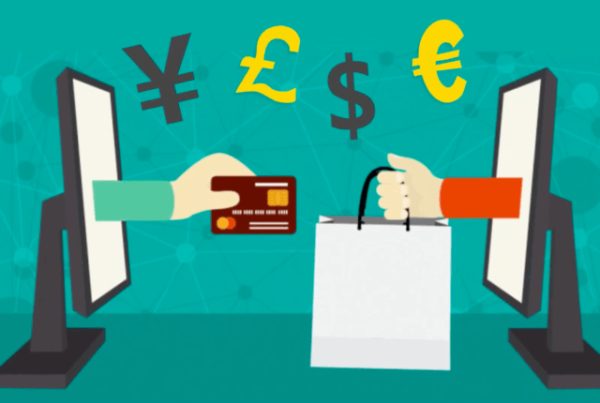What Is Payment Analytics?
Payment analytics is a field within financial analytics that uses data from payment systems to understand financial transactions better.
This can include data from credit card transactions, bank transfers, mobile payments, online transactions, and cash and check.
Keep reading to learn more about how payment analytics can help grow your business.
10 Best Ways To Grow Your Business With Payment Analytics
Here are the primary benefits of payment analytics.
1. Improve The Customer Experience
Payment data can help you identify bottlenecks in your payment process, the payment methods your customers prefer, and any issues that are causing your business transactions to fail.
This information helps you offer more convenient payment options, provide better customer support, and more.
Naturally, when you provide a better customer experience, you are more likely to increase customer retention, promote customer loyalty, and foster growth for your business.
2. Understand Payment Trends Based On Location
Product preferences vary by location due to regulatory, economic, and cultural differences.
Fortunately, payment analytics can help identify location-based trends and enable your business to tailor its offerings to customers in various regions.
Understanding and catering to regional trends can significantly broaden your market reach, leading to a more diversified customer base and increased sales.
3. Prevent Fraud
Payment analytics can help identify patterns associated with fraudulent activity, such as sudden spikes in transaction volumes or transactions from unusual locations.
Preventing fraud not only saves you money but also helps maintain your business’s reputation. This is key for sustained business growth.
4. Plan for Peak Periods
Payment analytics can reveal sales patterns during different seasons, promotional periods, and even specific times of the day or week.
With this information, your business can plan ahead for peak periods, ensuring you have adequate resources to handle the demand.
Efficient planning for peak periods is central to growing your sales and your business.
5. Increase Your Profits
Payment analytics highlight your business’ most profitable products and services and help you adjust your inventory and sales strategy accordingly.
Having the right strategy in place is central to growing your business.
6. Improve Decision Making
Insights from payment analytics allow you to make better choices for your business.
For example, comparing your transaction volumes to your product pricing gives you an idea of what prices your customers are most likely to pay. Once you know, you can adjust your prices as needed.
Making informed, data-driven decisions like this is better for growing your business than relying on guesswork.
7. Improve Your Customer Relationships
Insights from payment analytics can improve the relationships you have with your customers.
For example, if one of your loyalty programs increases your sales, you can model future programs on it to keep your customers satisfied with your offerings.
Strong customer relationships foster loyalty and increase customer lifetime value, contributing significantly to long-term business growth.
8. Optimize Your Marketing Efforts
Understanding customer payment behaviors can help you create product promotional strategies that resonate with and engage your audience.
For instance, if your analytics reveal that a particular product is popular among a certain demographic, you can allocate more marketing resources toward promoting that product.
Optimized marketing efforts help grow your business.
9. Streamline Your Operations
Payment analytics help you identify inefficiencies in your payment process. What if, for instance, you discover that your payment processing times are too long?
Well, once you know the problem, you can fix it.
Having a way to test for and fix problems with your payment process can have a positive impact on your business’ performance, and ultimately, its bottom line.
10. Enhance Your Risk Management
Payment analytics can help you identify patterns associated with high-risk transactions and customers.
This allows you to take steps to mitigate potential risks.
Proactive risk management helps protect your business, creating a solid foundation for business growth.
» MORE: How payment solutions can help you grow your business
Further Reading: Different Kinds of Payment Analytics
As the financial industry evolves, businesses will need to utilize different kinds of payment analytics to stay competitive.
Let’s take a brief look at the different types of payment analytics in use today.
Descriptive Analytics
Descriptive analytics is the most basic category of payment analytics, the main goal of which is to analyze historical payment data to understand how your customers are behaving.
This means summarizing your total sales for a certain period, but it can also mean:
Identifying the most popular payment methods your customers are using or—
Studying the frequency of transactions during different times of the day or week.
Further, it could include tracking changes in average transaction size over time and evaluating the impact of your marketing campaigns or changes to your website.
Diagnostic Analytics
Diagnostic analytics run a step beyond descriptive analytics by looking at past data to answer the question, “Why did something happen?”
For instance, why was there a high amount of credit card declines last month?
Whatever the question may be, diagnostic analytics is particularly good at unveiling the impact of external factors (like economic trends and regulatory changes) on payment behaviors.
Predictive Analytics
This type of analytics uses statistical models and forecasting techniques to understand the future.
A lot of businesses use predictive analytics specifically to reveal future sales trends. But predictive analytics can also be used to anticipate customer payment behavior, including their likelihood to default on a payment.
Other use cases for predictive analytics include:
Predicting the impact of changes in the payments landscape (like the introduction of new payment methods or changes in payment regulations) on business performance.
Forecasting future changes in customer payment preferences.
Predicting future security risks.
Estimating the financial impact of security breaches.
Prescriptive Analytics
Prescriptive analytics not only predict what will happen in the future but also recommend actions based on those predictions.
For example, prescriptive analytics may suggest ways to enhance your security based on current industry risks.
Additional use cases for prescriptive analytics include:
Suggesting ways to adapt your payment process to future customer preferences.
Advising on how to adjust your business in response to likely changes in payment regulations or economic conditions.
» MORE: Learn about how Pixxles keeps you ahead of the curve
Payment Analytics Data Types
There are different types of data that companies use with their payment analytics. Let’s take a look at the most common types.
Customer Data
This includes the following:
- Demographics (age, gender, location, etc.)
- Behavioral data (buying habits, preferences, customer journey on your platform, etc.)
- Customer relationship data (interaction history, feedback, etc.)
Product Data
Product data includes any type of product or service price, category, or sale history.
Analysis of product data in conjunction with payment data can reveal a few key insights, such as:
Which products tend to be bought together, which products are likely to be bought by different customer segments, and how product pricing impacts sales.
Transaction Data
Transaction data shows the transaction amount, time, and date, the payment method used, the status of the transaction, and more.
Analyzing transaction data can help identify opportunities for improving your business payment process.
Payment Processing Data
This data includes payment processing times, as well as information about payment gateway performance.
Analysis of payment processing data can reveal bottlenecks or inefficiencies in your payment process.
Fraud Data
This includes details of disputed transactions, common characteristics of fraudulent transactions, and patterns in fraud attempts.
Analyzing fraud data can help your business identify potential threats and strengthen its fraud detection and prevention mechanisms.
Financial Data
This type of data relates to the financial performance of the business, such as revenue, profits, costs, and cash flow.
Combining financial data with payment data can assist with financial planning and decision-making.
Market Data
Market data refers to data from the broader market and includes consumer trends, regulatory changes, economic indicators, etc.
Customer Sentiment Data
This type of data, usually collected from customer reviews and social media, provides insights into customer satisfaction regarding your business.
Channel Data
Channel data includes information about the channels through which transactions are made, such as in-store, online, and mobile apps.
Important Payment Analytics Metrics
Some of the most important metrics for payment analytics are as follows.
What Payment Types Your Customers Use
This metric helps you understand your customers’ preferred payment methods.
Are they using credit cards, digital wallets, bank transfers, or another form of payment? Payment analytics will provide the answer.
Transaction Volume
Monitoring your transaction volume helps you understand trends and patterns in your sales activity, such as peak times for purchases and seasonal variations.
How Many Repeat Customers You’re Getting, Plus Your Customer Churn
A high repeat customer rate suggests strong customer loyalty, while a high churn rate likely indicates dissatisfaction with some aspect of your business or payment process.
Payment Success Rates
A low payment success rate usually is a red flag for issues with your shopping cart or another aspect of your payment process.
Chargeback Rates
A high chargeback rate is not only costly but can also indicate problems with product quality or customer service. It can also mean that there is a high amount of fraudulent transactions taking place.
Average Transaction Value (ATV)
Your business’ average transaction value provides insights into customer spending habits and the effectiveness of your upselling strategies.
Time to Purchase
This metric tracks the amount of time between a customer’s first interaction with your website and their first purchase.
Knowing this provides insight into the effectiveness of your conversion strategies.
Cost of Payment Processing
This is the total cost associated with processing payments, and it includes your transaction fees, payment gateway fees, and any other related costs.
Failed Payment Rate
This is the percentage of transactions that fail due to issues of insufficient funds, expired cards, or technical problems.
A high failed payment rate can indicate the need to improve your shopping cart or your overall payment process.
Fraud Rate
This is the percentage of transactions that are identified as fraudulent.
Monitoring this metric can help businesses understand their risk level and how effective their fraud prevention measures are.
» MORE: Keeping you safe from fraud with Pixxles security compliance
Contact Pixxles
To learn more about what we can do for you, call us at +44 208 126 4154. If you’d like to start working with us, visit our Apply page.








